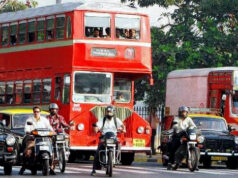On 15 August 1947, when India achieved independence, the country was grappling with problems of widespread poverty and crises in agriculture as well as industries. The First Five Year Plan was launched in 1951 which mainly focused on the development of the primary sector.
Five years later, on 14 May 1956, the Second Five Year Plan, famously known as the Mahalanobis Model, was announced. The emphasis of this plan was on government-led industrialization. Mr. Nehru outlined the central role of government when he said, “The public sector must grow not only absolutely but also relatively to the private sector.”
Thus started the License-Permit-Quota Raj in India, wherein government control was so strong that it not only decided which company would produce what, but also the amount of production, as well as the price of commodities. With the nationalization of banks in 1969 and the Monopolies and Restrictive Trade Practices (MRTP) Act of 1970, the License Raj was further strengthened.
Life under license raj was characterized by scarcity of resources. The choices people had available to them in their day-to-day life were very limited. For example, cars were available in one colour, and only two to three brands of cars or scooters existed in the market to choose from. The specialty of License Raj was that licenses were themselves made a commodity, and a scarce one, at that. Hence, if a company wanted to expand production, it needed a license to do so, which was not easily available. A ‘market’ for licenses developed; licenses had a price. Business competition under the License Raj meant getting licenses before your competitors. Often businesses acquired licenses, not to produce, but to stop the other from expanding. As Dhirubhai Ambani said, the art of managing government relationships was most critical to business success.
The License Raj created a ‘scarcity economy’, and this scarcity also applied to foreign reserves since we practiced ‘swadeshi’. The Balance of Payment crisis arose in the 1970s and worsened towards the end of 1980s. The balance of payments situation came to the verge of collapse in 1991, mainly because the current account deficits were financed by borrowings from abroad. The economic situation of India was critical; the government was close to default. With India’s foreign exchange reserves at USD 1.2 billion in January 1991 and depleted by half by June, an amount barely enough to cover roughly three weeks of essential imports, India was only weeks way from defaulting on its external balance of payment obligations.
India was in the need of an International Monetary Fund (IMF) bailout. The price of the bailout was the License Raj.
5:30 PM, 24 July 1991: The finance minister of India, Dr. Manmohan Singh presented the budget. He ended his speech with the historic lines: “But as Victor Hugo once said, ‘no power on earth can stop an idea whose time has come.’ I suggest… that the emergence of India as a major economic power in the world happens to be one such idea. Let the whole world hear it loud and clear. India is now wide awake. We shall prevail. We shall overcome.”
The Indian economy started on a path of economic liberalization, which has eventually impacted each and every sector of the country, and the life of every Indian citizen. The Balance of Payment (BoP) crisis was over by the end of March 1994 and foreign exchange reserves rose to USD 15.7 billion. Inflows of both Foreign Direct Investment (FDI) and Foreign Institutional Investment (FII) into India increased massively.
Fast forward 25 years to the present, we are an emerging super power and the fastest growing economy in the entire world. There are multiple factors that led us to these achievements, but no one can dispute the fact that economic reforms, which started in 1991, are one of the most important factors in the present success.
But why are these economic reforms so important? What were the changes that occurred due to them? More importantly, has the Indian economy reformed, or are we still struggling as a nation to achieve these reforms? These are questions which need to be answered. Given that 52% of present India was born after 1991, these questions become all the more important. Educating the younger generation, who will be the leaders of tomorrow, regarding the impact of public policy on their lives, is crucial. And the 25th anniversary of 1991 reforms provides us with the perfect opportunity to debate and discuss the history of life before and after reforms.
Centre for Civil Society (CCS) has launched the project “India Before 1991” with this objective. We are crowd-sourcing and documenting stories of life under the license raj from people across the country. Through these stories, we aim to educate the people of the country, especially the youth, about the state of the economy during that era and how life has changed because of the reforms.
(The website of the ‘India before 1991’ project can be accessed here: India Before 1991)
Post Disclaimer
The opinions expressed in this essay are those of the authors. They do not purport to reflect the opinions or views of CCS.






